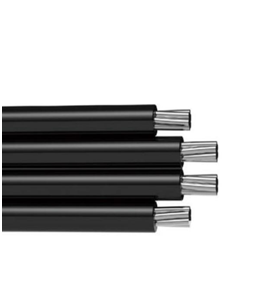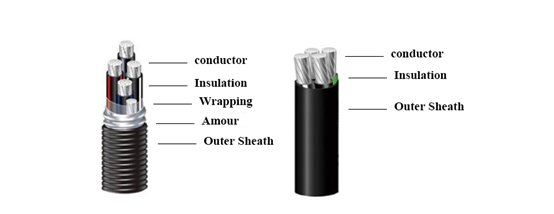I. Introduction
At present, there are two important problems in the LED bulb market:
The first is unclear identification. According to the LED bulbs tested by the Industrial Technology Research Institute, the actual luminous flux of LED bulbs as high as 50% or more is lower than the marked value by more than 10%.
The second is uneven quality. At present, there is no set of specifications on the market that can clearly explain the relationship between the price and quality of LED bulbs. As a result, consumers often hold "apples and oranges" for comparison, and some of them even pay a higher price, but they do not buy relatively high-quality products. This kind of bad currency is becoming more and more serious. It has caused problems in Europe, America, Japan and other countries that have paid close attention to the identification and quality of LED lamps / bulbs.
In view of this, the Energy Bureau of the Ministry of Economic Affairs has also accelerated the promotion of energy-saving labels for LED bulbs. For this matter, the author is both happy and worried. The good news is that at least Taiwan will soon have a common standard that can provide consumers with the LED bulbs they need. Worryingly, consumers have spent a lot of money to buy LED bulbs that meet the "Energy Saving Standard Requirements", is there really a guarantee of quality?
2. Is the lumen maintenance rate sufficient to represent the life of LED lamps?
At present, the more official representative specifications on the market, which can be related to the life of the bulb, should be the LM-80 specifications issued by the US Environmental Protection Agency / Energy Star for LED bulbs / lamps. However, since the release of this specification, some different voices have appeared in North America, and some reliability experts have even begun to call for the LM-80's lumen maintenance rate (L70) to be used as an LED bulb or lamp life judgment. The only basis.
In fact, in 2006, the US Department of Energy's Solid State Lighting (SSL) Quality Working Group invited 32 reliability experts to conduct a very in-depth discussion on LED reliability and life estimation methods. After considering the industrial technical capabilities of LED at that time, the working group decided that the reliability of LED components and lamps represented by the lumen maintenance rate (L70) would be the most significant and the most easily quantified indicator. The reason is that in the use of traditional tungsten filament light bulbs, as long as the tungsten filament is burnt out, it means that the life of the bulb is over, and the LED bulb is gradually and slowly declining in lumen. At the beginning of the recession, people cannot visually feel it. It has to wait until the light source declines to 70% (L70) of the original light source, people will feel that the light bulb is dimmed, which will affect the illuminance. Therefore, the working group recommends that the lumen maintenance rate (L70) be used as the sole criterion for determining the LM-80 specification. But the controversy is that the lumen maintenance rate is not equal to the life of LED bulbs or lamps (Life TIme)? What are the problems with the LM-80 specification?
3. Apple should compare with Apple: LED lamps are "electronic products", not traditional "bulbs"
LED component life:
Basically, LED components are light-emitting diodes, which are originally a type of electronic components. Therefore, if you want to talk about the life of LED components, you should use the quite mature electronic component accelerated life test (ALT) method, with the number of samples and statistical analysis of data, etc., to evaluate the life of LED components. As far as the current LM-80 specification is concerned, with three test temperatures and the lumen maintenance rate requirements set by Energy Star, as the failure judgment standard of LED components, the controversy is not big, especially in the TM-21 life After the estimation method was released, it resolved the situation of various manufacturers saying different things about the life of LED components, but for lamp manufacturers using LED components, the possible controversial points are:
1. In the ENERGY STAR / LM-80 specification, LED components must pass three different temperature tests. At each test temperature, at least 20 LED components must pass 6000 hours of testing, and the lumen maintenance rate As the only basis for judging the success or failure of the experiment. The controversy lies in the fact that if the LED components are not bright or burned during the 6000-hour test, they are not included in the calculation of lumen maintenance. This alone will no longer meet the requirements for the calculation of LED component life.
2. It is also feasible to use the LM-80 test data as the basis for life calculation, as long as the failure modes are clearly defined to represent failure (for example: lumen maintenance rate, dead light, burnout, color coordinates / voltage / current deviation) Shift, etc.), when any failure mode defined by failure occurs, it means that the life of the LED component is up. In addition to the quality of the die, including the choice of packaging materials to wire bonding technology, etc., all affect the life and reliability of LED components. Therefore, it is absolutely necessary to pass the "Reliability Qualification Verification" for the LED components that are to perform LM-80 or life verification.
Remarks: In the course of LM-80 / 6000 hours of testing, in order to reduce the risk of partial LED failure and interruption of the test, usually the LED component factory will increase the number of samples for the test. At the time of its death, ENERGY STAR allowed failure samples not to be included in the calculation of the average lumen maintenance rate, but the requirements must be noted in the LM-80 report. Therefore, when reading the LM-80 report provided by the LED supplier, the lamp manufacturer must be more cautious in addition to understanding the test temperature and lumen maintenance rate.
LED bulb / lamp life:
Is there really only a factor of lumen maintenance that affects the life of LED bulbs or lamps? Basically, LED lamps are composed of dimmers, power supplies, light-emitting diodes, optomechanical driving components, heat dissipation modules, etc. This means that the life of the entire lamp is actually connected in series by several electronic modules Or connected in parallel, and each electronic module has its own function and reliability level. When a problem occurs in any module, it means that the LED lamp has failed. This is very different from the traditional tungsten filament bulb. We regard LED products as electronic products, which are the main reasons for the failure of LED products?
In fact, one or two can be glimpsed from the common failure situations of general electronic products. Common failures of electronic products include poor heat dissipation design, overload use, drive circuit failure, power failure, and poor parts or process technology. As long as the failures that occur on electronic products will basically appear on LED products, for this type of defects, the reliability design verification methods of electronic products can usually be used to be found in the laboratory and improved in advance. The other type of failure is the failure of electrical characteristics. For LED lamps, such as lumen maintenance, color temperature / color change, power supply parameter deviation, etc., for this type of defect, use environmental tests and reliability proof tests Just verify it. Therefore, from the past experience in the reliability of electronic products, LED products should also follow the traditional electronic product environment and reliability test mode to verify its reliability and life.
At present, it is not an easy task to find a large number of LED lamp failure data in the literature. The relatively large-scale data in the past two years is in Elwood, Pennsylvania, in the eastern United States. Elwood learned from the statistics of 5,400 outdoor LED street lamp failure data that power supply and control drive module failure accounted for 59%, poor heat dissipation accounted for 31%, and defective LED components accounted for about 10%. This is a product with American design and packaging technology capabilities, and for the actual observation data of outdoor LED street lights, from the data, we can know that the power module and the control drive module account for the largest proportion of failures. Second, plus outdoor environmental factors are more complex than indoor environmental factors (including temperature, humidity, rain / condensation, dust, sulfidation corrosion, lightning strikes, power supply changes, etc.). Therefore, for outdoor LED products, environmental simulation tests and life tests are more important than just energy saving or lumen maintenance.
XLPE Insulated PVC sheath Alloy Cable is kind of cable, in which the rare earth high compressed aluminium alloy is used as conductor, and PVC is used as Jacket wound around. The insulation adopts XLPE material, featuring with fire & moisture resistance. The whole structure is designed and manufactured elaborately based on advanced international technology and equipment. It has completely independent intellectual property rights and removed the defects of aluminum cable systematically. It applies to both dry and moist places at the temperature of 90ºC and under. This cable presents excellent mechanical performance.
Standard: GA306 Jacket: PVC
Conductor: aluminum alloy Cores: single core or multicores
Insulation: XLPE Feature: flame retarded
Rated voltage: 0.6/1KV, 8.7/10KV, 8.7/15KV, 26/35KV

Advantages:
- Conductor fatigue resistance
- Light weight
- Easy installation
- Long life span
- Flame retarded
- Decent mechanical strength
- Chemical & acid resistance
- Creep resistance
- Impact resistance
- Easy to bend
- Fire resistant
- Zero halogen & low smoke
- Corrosion & abrasion resistant
- ...

Application:
- For civil use
- For commercial use
- For industrial use
- Schools
- Large venus
- And many more...
Welcome to visit our factory to learn more about us. If you have any questions, please feel free to contact us.
XLPE Insulated PVC Sheathed Alloy Cable
XLPE Insulated PVC Sheathed Alloy Cable,XLPE Insulated Al Alloy Cables,Aluminum Alloy XLPE Cables,Al Alloy Armoured XLPE Cables
Smartell Technology Co.,Ltd , http://www.liencable.com
